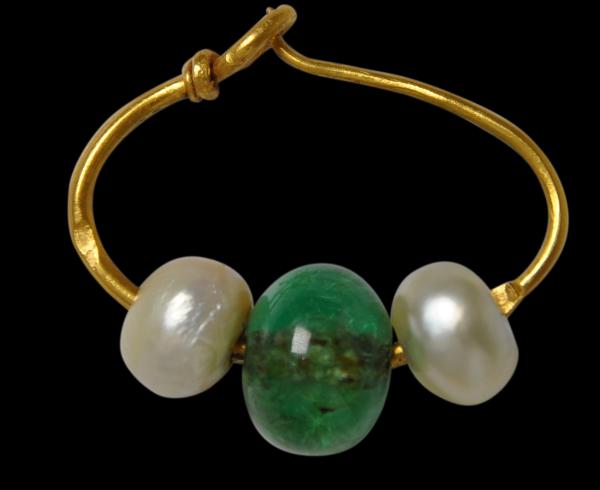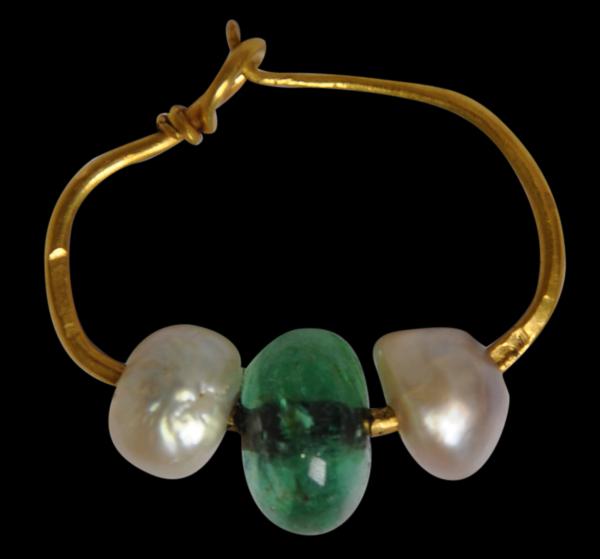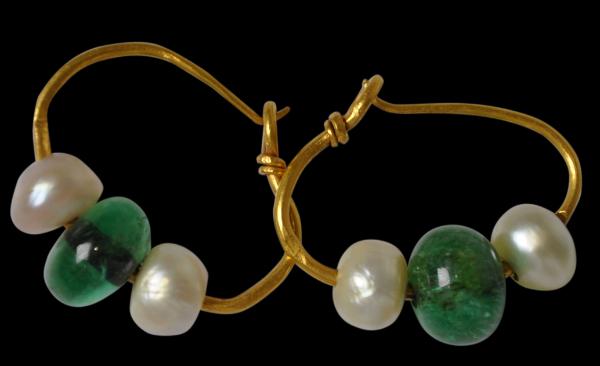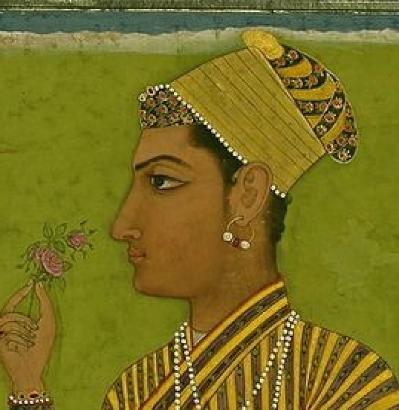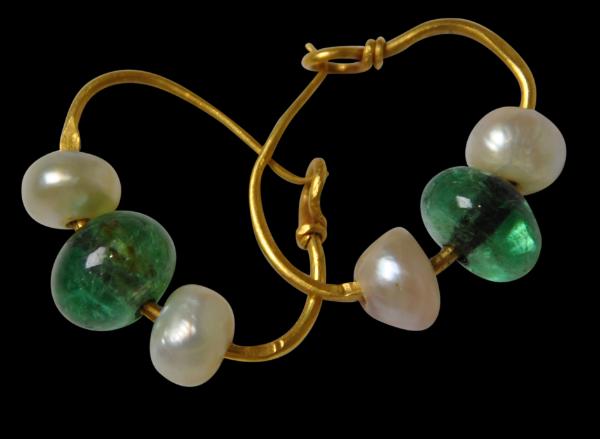
Indian Emerald Court Earrings
Pair of Gold, Emerald & Pearl Court Earrings (Antiyan Marvareed)
Northern India or the Deccan, India
18th-19th century
diameter of hoop at widest point: 3cm (approx.); weight: 9g
Such earrings were worn at court by male courtiers, although in later times, similar earrings began to appear in the inventories of female members of royal families as well.
Each of this pair of earrings comprises a thick gold wire loop, a large central emerald cabochon with a pearl on either side. According to Bala Krishnan (2001, p. 160), such a formulation is a classic design adopted as part of the court dress by the Mughal emperors, a fashion which was then copied in royal courts across India. It was during Mughal Emperor Jahangir’s reign in the seventeenth century that the practice of wearing a gold loop in the ear with either a large ruby or emerald between two large pearls developed. The practice started with the emperor himself who apparently had his ear’s pierced and took to wearing earrings adorned with pearls as a mark of thanksgiving for his recovery from a serious illness. Thereafter, it became common practice for other nobles in the courts to pierce their ears and wear such earrings.
Typically such earrings utilised Basra pearls and Colombian emeralds. Basra pearls were brought to India by Arab traders and emeralds were traded from mines in Central America to India by the Spanish and Portuguese.
Almost identical court earrings are illustrated in Bala Krishnan (2001, p, 160).
to see a similar example sold at Christie’s.
The earrings are in a stable and wearable condition.
References
Bala Krishnan, U.R., & M.S. Kumar, Dance of the Peacock: Jewellery Traditions of India, India Book House Ltd, 1999.
Bala Krishnan, U.R.,
Jewels of the Nizams, Department of Culture, Government of India, 2001.Provenance:
private collection.
Inventory no.: 3252
SOLD

